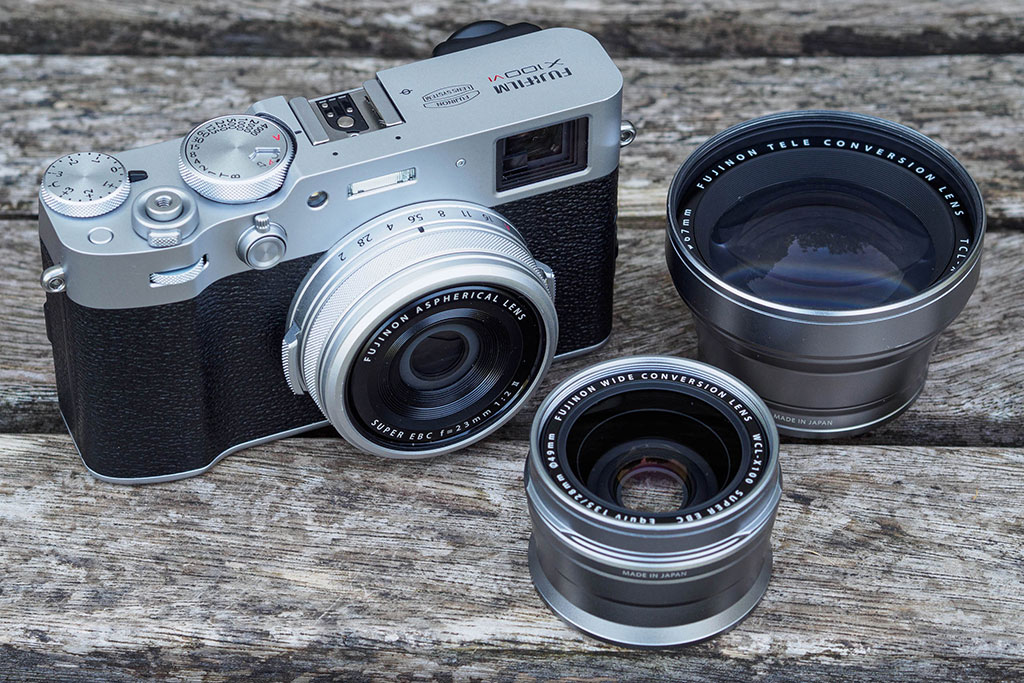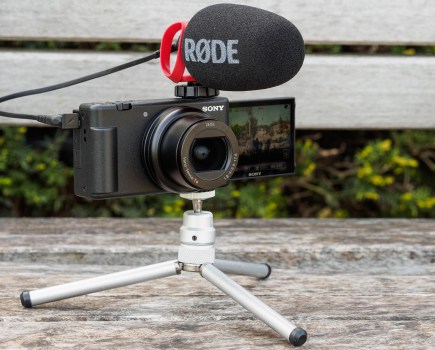With the Fujifilm X-E5 being touted as an ‘interchangeable lens X100VI’, many potential buyers will find themselves wondering which of the two to get. The two cameras look very much alike, have very similar specifications and features, and deliver pretty much identical image quality. They are also almost exactly the same size, and cost about the same if you buy the X-E5 with its 23mm f/2.8 kit lens. Both are, of course, among Fujifilm’s best cameras.
So what exactly is shared between them, and what are the main differences?
Buy now: Fujifilm X100VI
Buy now: Fujifilm X-E5 with XF 23mm F2.8 R WR lens
First of all, let’s quickly list the main similarities and differences. Then I’ll look in more detail at the major differences, and what they mean. I’ve also included a detailed spec comparison table at the end of this article.
Fujifilm X-E5 vs Fujifilm X100VI: key similarities and differences
- Same rangefinder-style design with flat body and corner-mounted viewfinder, and almost the same size
- Same core imaging components: 40MP X-Trans sensor, X-Processor 5
- Mostly the same specs and features – e.g ISO range, continuous shooting speeds, autofocus system and video specs
- Fixed lens on X100VI, interchangeable lenses on X-E5
- Very similar control layout, with shutter speed and exposure compensation dials on top and aperture ring on lens
- Film Simulation dial with Film Simulation Recipe support on the X-E5
- Hybrid optical/electronic viewfinder on the X100VI, vs electronic-only on the X-E5

Interchangeable vs fixed lenses
Most obviously, with the X-E5 you can use a wide range of different lenses. Fujifilm is selling the camera either body-only, or with the slim XF 23mm F2.8 R WR kit lens, which comes in either silver or black to match the camera body. Like the X100VI’s 23mm f/2 lens, it gives an angle of view equivalent to a 35mm lens on full-frame. But you can also use any X-mount lens from Fujifilm or third-party makers like Sigma, Tamron and Viltrox, and there’s a huge array to choose from.
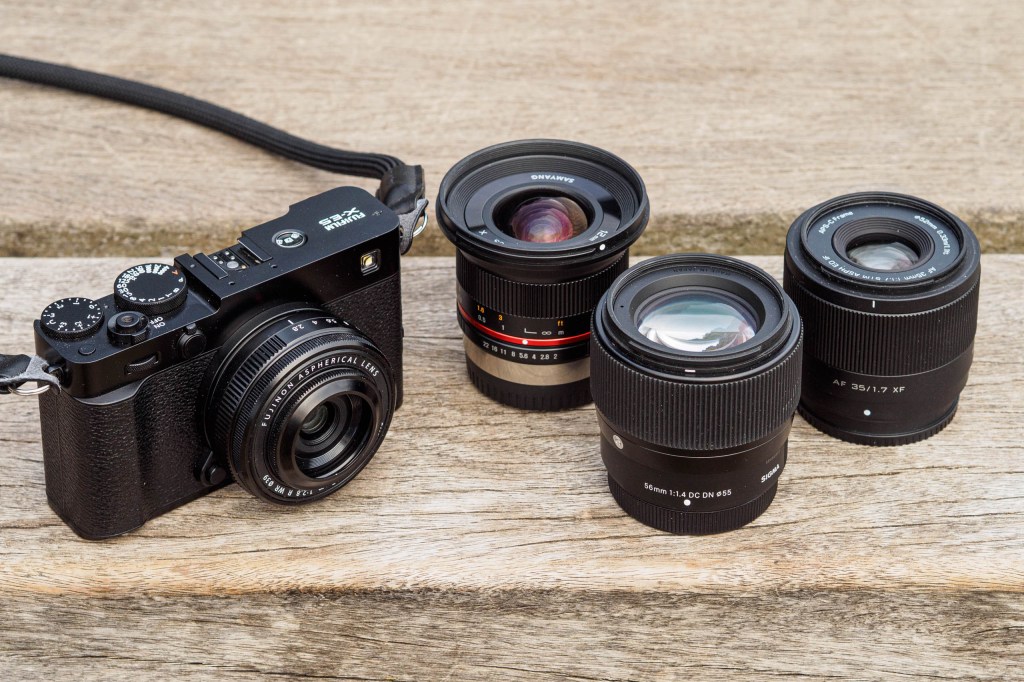
Use the X-E5 with its 23mm f/2.8 kit lens, and it ends up very similar in size and weight to the X100VI. However, it’s 7mm deeper front-to-back, which means the X100VI will slip more easily into a (large) pocket.
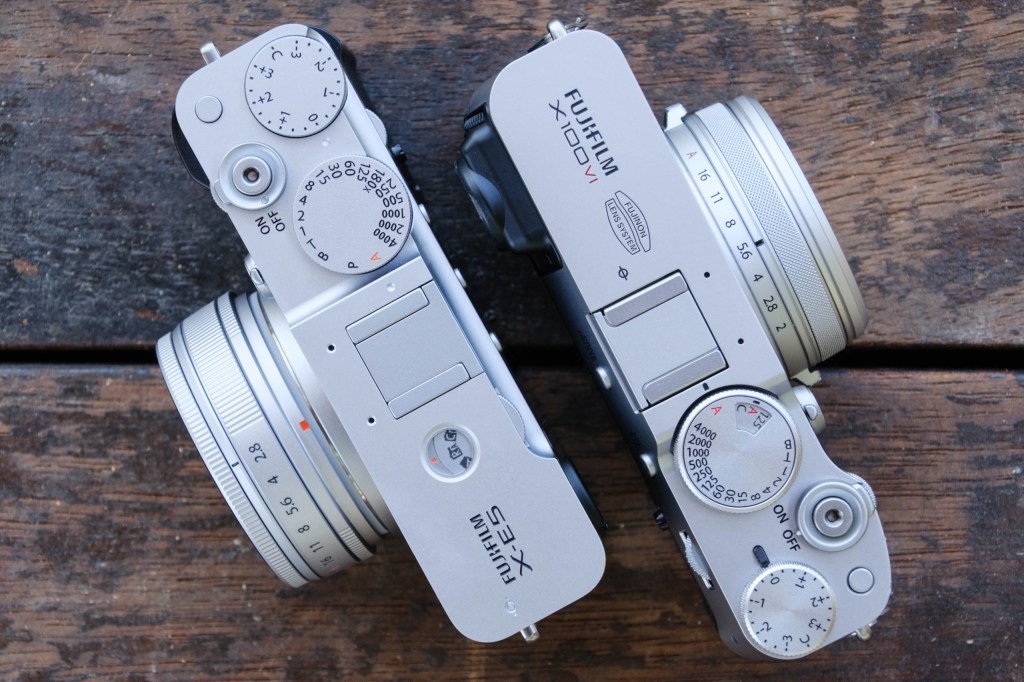
In contrast, with the X100VI you can only use the built-in 23mm f/2 lens. However it has a stop-larger maximum aperture that the X-E5’s f/2.8 kit lens, which gives it an advantage in low-light situations. But on the other hand, with the X-E5 you can always buy and use a larger-aperture but bulkier lens, for example the XF 23mm F1.4 R LM WR.
You’re not wholly limited to one focal length on the X100VI, by the way. You can also buy screw-on wideangle and tele converters, which give 28mm and 50mm views, respectively.
The X100VI also has a built-in switchable 4-stop neutral density filter, which can be handy when you want to use slower shutter speeds, or large apertures in bright light.
Viewfinder and screen
One major difference lies with the viewfinder. The X100VI boasts a unique hybrid optical/electronic finder, where the X-E5’s is electronic only. Many photographers love the old-school optical viewfinder on the X100VI and feel that it provides them with a much better connection to the subject. Others aren’t really bothered – personally I very rarely use it.
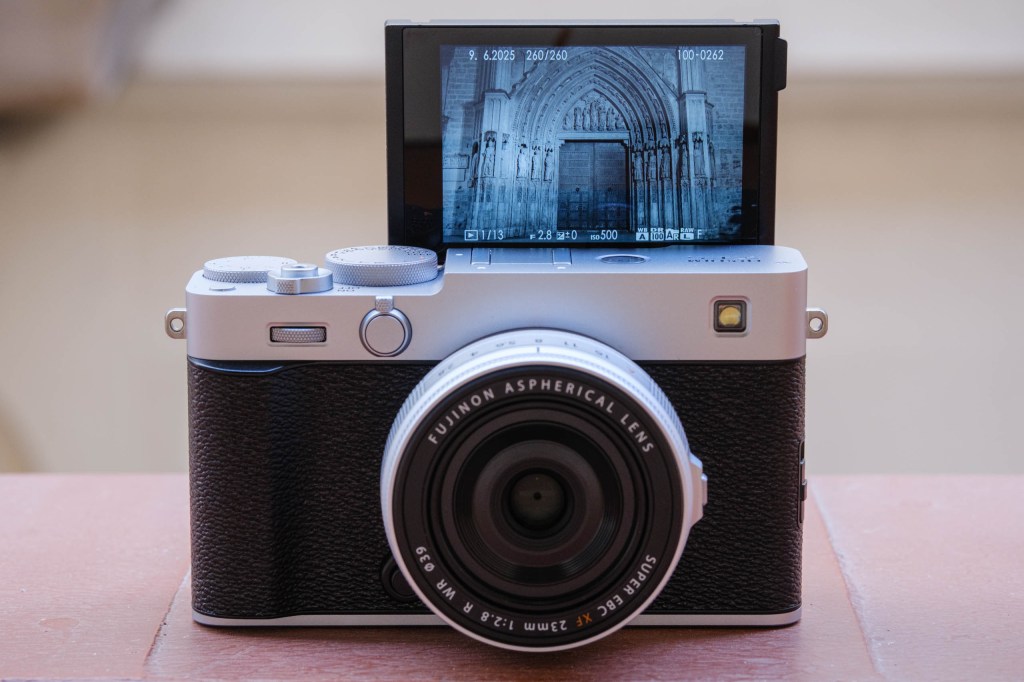
Another difference lies with the screen articulation, and this time it favours the X-E5. Its screen can tilt up through 180° to face forwards, whereas the X100VI’s screen only tilts up and down. This might matter to you if you want to take selfies or video yourself.
Film Simulations
One major difference between the two cameras comes with how you access Fujifilm’s signature Film Simulation colour modes, which are one the brand’s main attractions. On the X100VI, these accessed from the onscreen quick menu via the Q button, which works reasonably well. But since then Fujifilm has made a point of making them more accessible, with the X-E5 having a physical dial beside the viewfinder for selecting between the most popular options.

Film Simulation Recipes have also become very popular within the Fujifilm community. Essentially, these exploit the array of in-camera processing settings to achieve more stylised looks over the base Film Sim modes. On the X100VI, you can use them via a Custom Settings option, but this includes the entire camera setup. With the X-E5, Fujifilm has fully embraced Recipes and allowed you to store three favourites that can be quickly accessed via the Film dial, without any risk of changing any other camera settings at the same time.
Overall, if you want to be able to change Film Simulations quickly, and to experiment with Recipes, the X-E5 has the edge.
Other differences
Other advantages for the X100VI include its practically silent in-lens shutter. In contrast, while the X-E5 is still pretty unobtrusive, the shutter is audible in quiet situations. So if you need to be able to shoot without disturbing anyone, the X100VI wins.
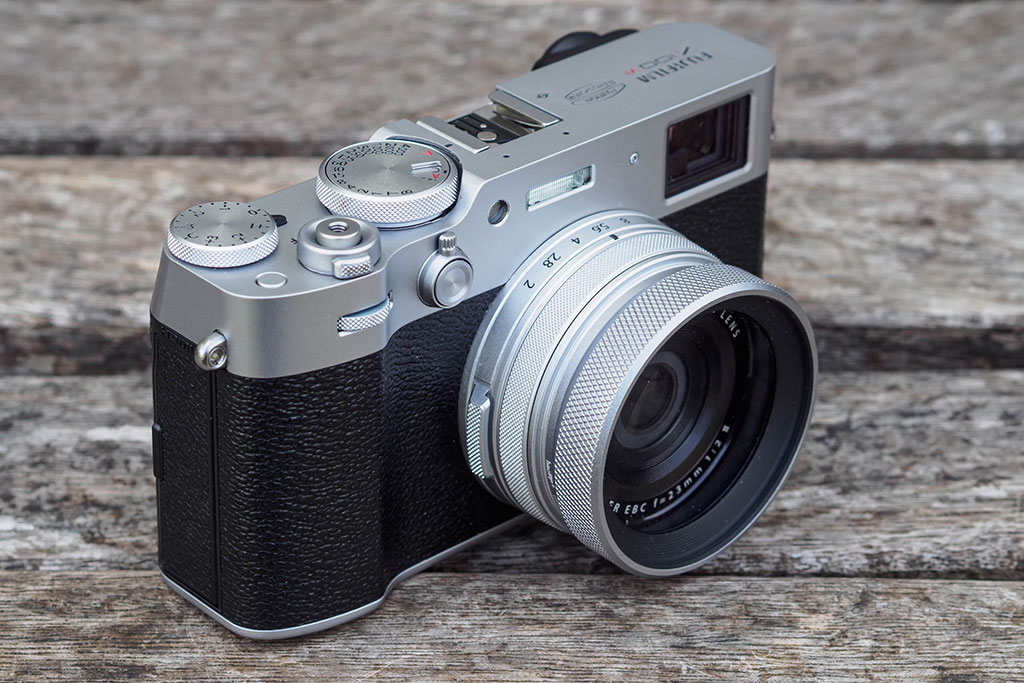
The X100VI is weather-sealed too, just as long as you add a 49mm protective filter in front of the lens. In contrast, the X-E5 has no specific claims of being sealed against dust or rain.
Also, the X100VI also has a small built-in flash, which can be handy to add a little extra light when shooting indoors, or fill-in outdoors on a bright day. The lens shutter can sync with flash at any speed, too. With the X-E5 you have to use an external unit.
So which should you choose?
If you love the X100VI’s styling and design, but really want to be able to change lenses, the X-E5 might be the perfect camera for you. Or maybe you just don’t love a 35mm equivalent lens, in which case you could fit the X-E5 with the XF 18mm F2 R or XF 27mm F2.8 R WR instead, giving 28mm and 40mm equivalent respectively (the latter would be my choice).
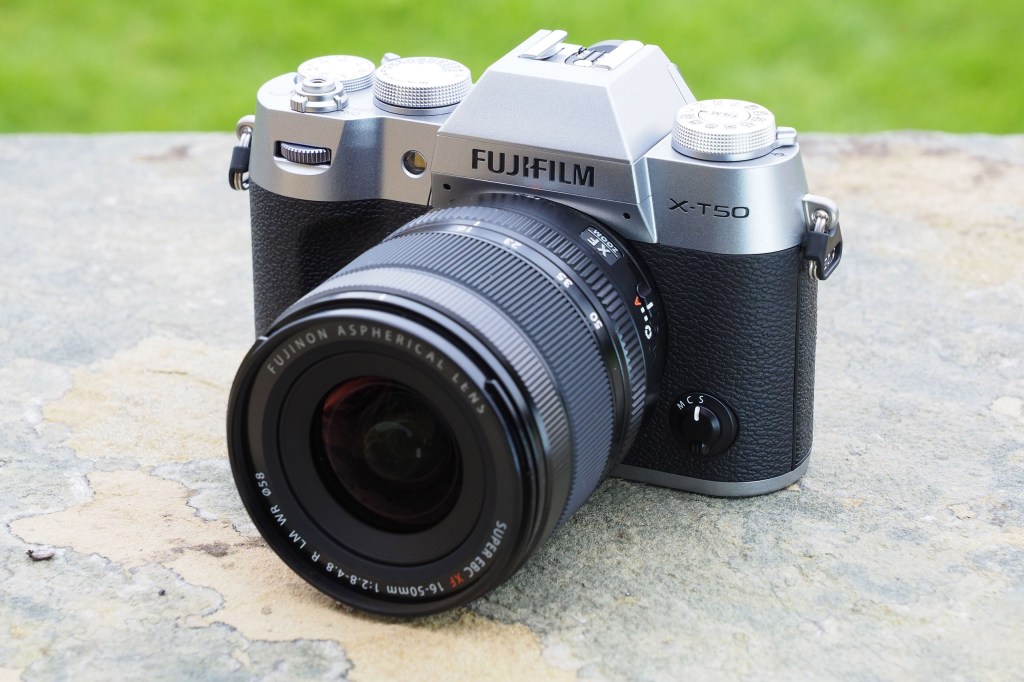
If you’re not wedded to the X-E5 / X100VI flat-body design, though, it’s also well worth looking at the Fujifilm X-T50. This also has a very similar feature set, but in a slightly larger SLR-like body. It’s great to see Fujifilm giving users so much choice.
Further reading:
- Fujifilm X100VI Review – X hits the spot
- Fujifilm X-E5 review – an X100 with interchangeable lenses? Sign me up!
- Fujifilm X-T50 review – Small 40MP camera, major game changer
Fujifilm X-E5 23mm f/2 kit vs Fujifilm X100VI: detailed specifications comparison
Note that in the comparison below, we’re looking at the X-E5 with the 23mm f/2.8 lens. This only really affects the size/weight specs. Differences between the cameras are highlighted in bold text.
| X-E5 + 23mm f/2.8 kit | X100VI | |
| Sensor | 40MP X-Trans CMOS 5, 23.5mm x 15.7mm | 40MP X-Trans CMOS 5, 23.5mm x 15.7mm |
| Output size | 7728 x 5152 | 7728 x 5152 |
| Lens | X-mount, 23mm f/2.8 | Fixed 23mm f/2 |
| Shutter speeds | 15min – 1/4000sec (mechanical), 15min – 1/180,000sec electronic | 15min – 1/4000sec (mechanical); 15min – 1/180,000sec electronic |
| Sensitivity | ISO 125-12,800 (standard), ISO 64-51,200 (extended) | ISO 125-12,800 (standard), ISO 64-51,200 (extended) |
| Exposure modes | PASM, Auto | PASM |
| Metering | Multi / Spot / Average / Center Weighted | Multi / Spot / Average / Center Weighted |
| Exposure comp | +/- 5EV in 0.3EV steps | +/- 5EV in 0.3EV steps |
| Continuous shooting | 8fps (mechanical shutter); 13fps (electronic); 20fps with electronic shutter and 1.29x crop | 11fps (mechanical shutter); 13fps (electronic); 20fps with electronic shutter and 1.29x crop |
| Screen | 3in, 1.04-dot touchscreen; tilts down, up and forwards | 3in, 1.62-dot touchscreen; tilts down and up |
| Viewfinder | 2.36m-dot, 0.62x OLED EVF | Hybrid viewfinder; 0.52x OVF, 3.69m-dot, 0.66x OLED EVF |
| AF points | 117 or 425 | 117 or 425 |
| Subject detection | Animals, birds, cars, motorbikes, airplanes, and trains | Animals, birds, cars, motorbikes, airplanes, and trains |
| Video | 6K 30p, 4K 60p, Full HD 240p | 6K 30p, 4K 60p, Full HD 240p |
| External mic | 3.5mm stereo | 2.5mm stereo |
| Memory card | UHS-II SD | UHS-I SD |
| Power | NP-W126S Li-ion | NP-W126S Li-ion |
| Battery life | 400 shots | 450 shots |
| Dimensions | 124.9 x 72.9 x 62.1mm (with 23mm lens) | 128 x 74.8 x 55.3mm |
| Weight | 535g (with battery, card, and 23mm lens) | 521g (with battery and card) |
| Flash | Hot-shoe only | Built-in, hot shoe |
| In-body stabilisation | 7 stops | 6 stops |
| Film simulation recipes | 3 recipes | – |
| Controls | Film simulation dial | ISO dial |
| Ports | 3.5mm mic/remote, USB-C, micro HDMI | 2.5mm mic/remote, USB-C, micro HDMI |
| Aspect ratio | Selectable using button/dial | Set within image size sub-menu |
Follow AP on Facebook, Instagram, YouTube and TikTok.


